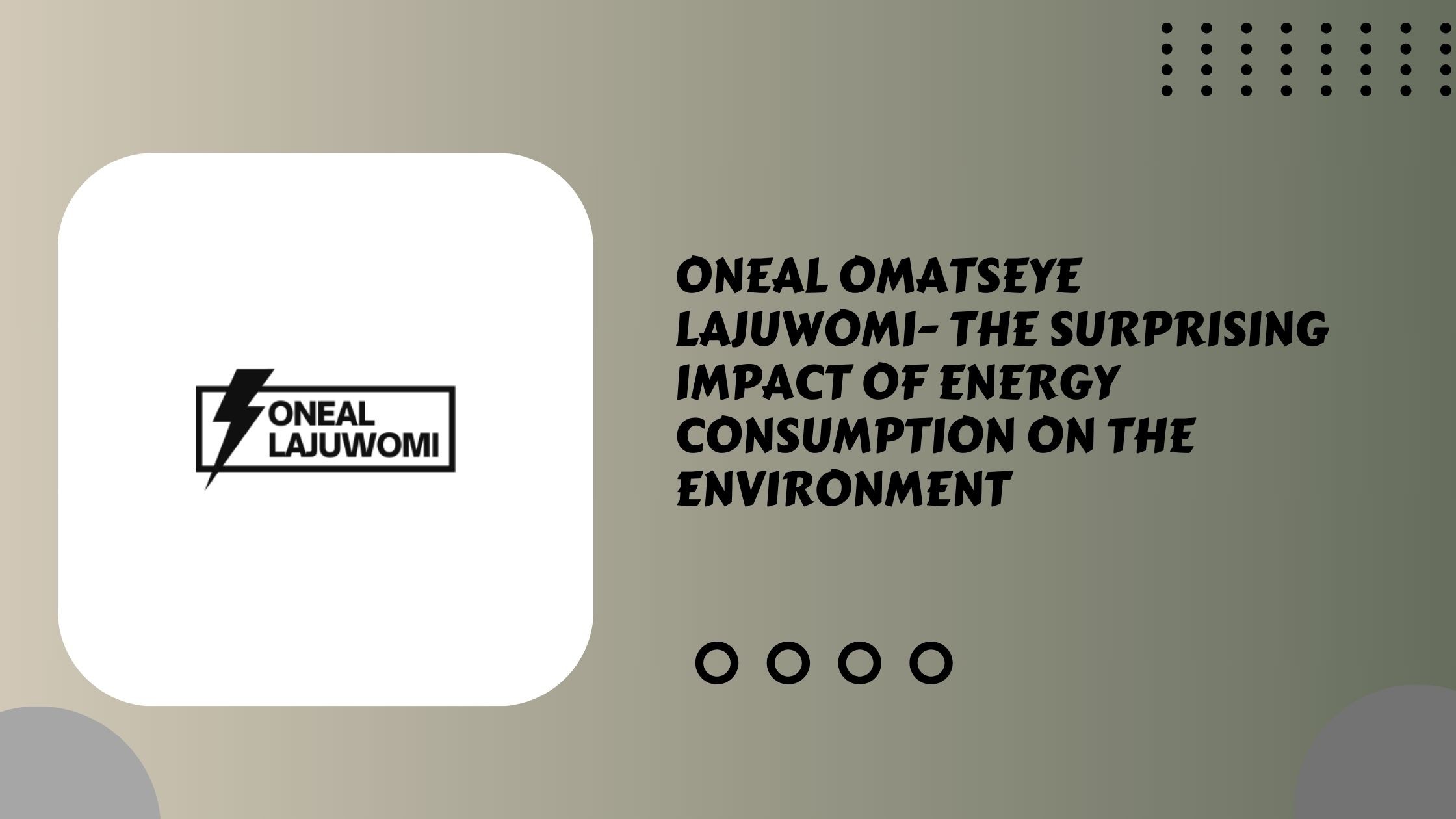Oneal Lajuwomi- The Role of Technology in Monitoring and Managing Energy Consumption
Technology plays a crucial role in monitoring and managing energy consumption, contributing to more efficient and sustainable use of resources. Oneal Lajuwomi shares are several ways in which technology is involved in this process.
1. Smart Meters
Monitoring: Smart meters provide real-time data on energy consumption. This data is often accessible to both consumers and utility companies, allowing for a better understanding of usage patterns.
Remote Management: Utility companies can remotely monitor and manage energy distribution, reducing the need for manual meter reading and enabling quicker response to outages or other issues.
2. Energy Management Systems (EMS)
Data Analytics: Advanced analytics tools process large volumes of data from various sources, including smart meters and sensors, to identify patterns, anomalies, and opportunities for energy savings.
Optimization: EMS can optimize energy consumption by adjusting settings for heating, ventilation, air conditioning (HVAC), lighting, and other systems based on real-time data and user preferences.
3. Internet of Things (IoT)
Connected Devices: IoT-enabled devices and sensors can communicate with each other and with centralized systems to provide detailed insights into energy usage. For example, smart thermostats can adapt to occupancy patterns and adjust temperature settings accordingly.
Automation: IoT devices can automate energy-consuming processes, turning off equipment when not in use and optimizing energy usage based on occupancy and demand.
4. Demand Response Systems
Real-Time Pricing: Technologies enable dynamic pricing models based on real-time demand and supply conditions, encouraging consumers to shift their energy usage to periods of lower demand when prices are lower.
Automated Response: Businesses and consumers can use automated systems to respond to demand signals, adjusting their energy usage during peak times or when renewable energy sources are abundant.
5. Energy Storage Technologies
Battery Storage: Advanced battery technologies facilitate the storage of excess energy generated during periods of low demand or high renewable energy production. This stored energy can be used during peak demand times or when renewable sources are not producing.
6. Blockchain Technology
Transparency and Security: Blockchain can enhance the transparency and security of energy transactions. It enables the creation of decentralized energy markets and ensures the integrity of data related to energy production, consumption, and transactions.
7. Artificial Intelligence (AI)
Predictive Analysis: AI algorithms can analyze historical data to predict future energy consumption patterns, helping utilities and consumers make informed decisions.
Machine Learning for Optimization: Machine learning algorithms can continuously learn and optimize energy usage based on evolving patterns and user behaviors.
8. Augmented Reality (AR) and Virtual Reality (VR)
Training and Visualization: AR and VR technologies can be used for training personnel in energy management practices and for visualizing complex energy systems, making it easier to identify inefficiencies and areas for improvement.
The integration of these technologies offers a comprehensive approach to monitoring and managing energy consumption, promoting sustainability, reducing costs, and enhancing overall energy efficiency. https://onealomatseye.hashnode.dev/ #oneallajuwomi #onealomatseye #onealomatseyelajuwomi #energyconsumption

 News Feed
News Feed  Albums
Albums  Popular Posts
Popular Posts  Memories
Memories  Pokes
Pokes  Blog
Blog  Market
Market  Directory
Directory  Events
Events  Games
Games  Jobs
Jobs  Offers
Offers  Find friends
Find friends  Common Things
Common Things  Fundings
Fundings 
